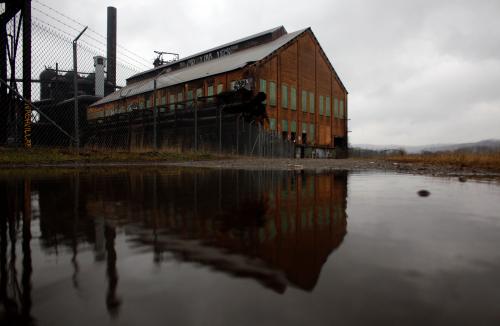“A single spark,” Mao wrote, “can start a prairie fire.” That spark may have been lit in Cuba. Fidel Castro’s announcement that he would not seek the office of head of the Cuban Council of State (the presidency) paved the way for the National Assembly of Cuba to choose his younger brother, Raul, as his replacement. Although Raul has sworn to stick to the socialist path, the new Cuban leader will have to mollify a public that has grown increasingly restless over issues such as stagnant wages, food scarcity and a declining standard of living.
Many observers have predicted that a post-Fidel Cuba will follow a cautious, incremental reform strategy rather than a more fast-paced approach-similar to those implemented by Deng Xiaoping, the architect of China’s economic liberalization after Mao’s death. Indeed, there are many voices urging Cuba to avoid the “shock therapy” pursued by the socialist countries of Eastern Europe and the former Soviet Union, and to copy instead the slower reforms pursued by China-“crossing the river while feeling the stones” in Deng’s phrase. But the new Cuban president may find that copying the Chinese is much harder than it looks.
First, in terms of economic structure, Cuba looks more Eastern European than Chinese. Less than 20 percent of the Cuban workforce is employed in agriculture. In China in 1978 it was over 70 percent. Compare that to Ukraine (22 percent), Poland (23 percent), Bulgaria (25 percent), and Lithuania (20 percent) in 1990. The economic difficulties in former Soviet and Eastern European countries did not arise due to reform speed, but because of the over-industrialization of these economies. By contrast, China was primarily an agricultural economy. In socialist systems it is easy to lure collective farm workers to cities to work in a new private sector. On the other hand, it is nearly impossible to lure workers, capital or inputs to a private sector when those things are tied up in subsidized state enterprises that provide workers with job security and benefits. In that case, private businesses can only thrive if state-owned enterprises are closed or privatized quickly.
Second, the new Cuban leader may find that radical reform is a necessity, not a choice, in order to prevent asset stripping and theft by enterprise managers and employees. Many of the Eastern European countries experimented with their own versions of “gradual reform”—- Hungary, Poland, Bulgaria, Romania, Slovakia and Ukraine (even the Soviet Union itself under President Mikhail Gorbachev’s perestroika programs). They were all dismal failures. Their half-way reforms became little more than a way for insiders to steal from the state and to enrich themselves and their friends. Little job creation, new investment, or growth followed.
Third, Raul will also find that one of the main complaints of the Cuban population — the dual economy — cannot be easily fixed with minor economic changes. The government heavily subsidizes a small basket of goods for every Cuban, which can be bought in the Cuban pesos with which most people are paid; all other purchases must be paid in convertible pesos-about 25 times the cost in Cuban pesos. The result has been to create increasing disparities between those with access to convertible pesos and those without.
Were Cubans to try to grow gradually a new private sector alongside existing state enterprises the way China did, they would have very little farm labor to draw from. Could Cuban businesses lure workers from the service sector? Possibly. But the service sector in Cuba is dominated by tourism, where workers receive wages in dollars and in convertible pesos — something that new private firms could not match without full currency convertibility. That leaves laborers in state enterprises-precisely the same labor source that forced smaller Eastern European nations to privatize and restructure quickly. Cuba’s state enterprises are simply too large and too inefficient to be ignored as they were in China. Without rapidly reforming its inefficient state enterprises, Cuba faces the prospect of becoming trapped in a low-wage, low-productivity cycle.
It is true that many in the East Bloc experienced unemployment, corruption, widening inequality, and currency collapse, whereas China has grown steadily more prosperous. But these outcomes had little to do with reform speed. There are several lessons to be learned from the mistakes made by some Eastern European socialist countries — delaying reforms for extended periods; relying too much on the use of vouchers to privatize companies; continuing to subsidize failing companies; or neglecting regulatory and legal reforms.
Raul will find that the lessons from Eastern Europe can inform economic policy and guide the Cuban economy through turbulent times.
The Brookings Institution is committed to quality, independence, and impact.
We are supported by a diverse array of funders. In line with our values and policies, each Brookings publication represents the sole views of its author(s).



Commentary
Op-edPost-Fidel Cuba: Lessons for Raul
March 28, 2008